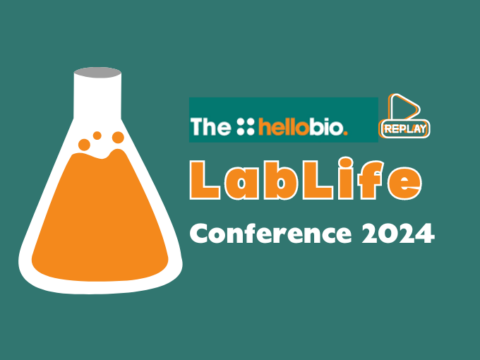
Developing an online presence can be an effective way to communicate research. However, simply sharing your output on social media is not enough. Who this reaches is important for impact and scholarly debate. Kirsty Wallis calls for an audience-first approach to social media, arguing that taking the time to understand your audience and your social media platform will generate wider community involvement in your research.
The year 2020 has brought with it an explosion of open access and public interest in science and research. Coupled with Plan-S and increasing policy pressure to expand Open Access and outreach this is a better time than ever to reach new audiences. When using social media to share research, a lot of people take a broadcast-style approach, sharing updates and links to their new outputs, and those of colleagues, on their chosen platform. There are even tools like Kudos that are built to support this style of communication, allowing you to share to multiple platforms simultaneously, while Altmetrics tools collect evidence of who is interacting with your posts and talking about your works online, in the media and beyond.
But there is another way to use social media to enhance your research communication which involves a little more thought and planning, but can be extremely rewarding.
Understanding your audience
To do this most effectively the first thing you have to do is step back and take stock. Think about the following questions:
What am I sharing on social media?
Is it just links? Do you share opinions or join debates? Do you tweet about the research process as well as the outputs?
Who am I talking to?
You understand the content you are sharing, but think about who will respond to that content as you send it. Is it just your colleagues and peers who can engage on the same level? That’s fine if that is your intent, but if you want to reach a different audience then you will need to reconsider your approach. Which leads on to…
Who do I want to talk to?
This is now getting to the important part – know your audience. You know your research better than anyone else, and you also know who you want to share it with. That could be fellow academics in your field, practitioners in related fields, or it could just as easily be members of the public, enthusiasts or any number of communities that have an interest in the outcome of your research. Don’t limit yourself at this point, just try to list all of the groups that could be interested in what you have to say.
What do I want to be sharing with them?
Once you have identified who you want to talk to, refer back to what you have been sharing. Consider how you need to present information to really engage your audience. You need to be able to share more than just links to complex academic papers with this audience once you find them. You need to commit the time and effort to truly engage with everyone. There are some great examples out there; I personally enjoy following Chris Stringer, Lee Berger and Alice Roberts on Twitter, and Suzannah Lipscombe and Dan Jones on Facebook. I also follow a number of Science and Anthropology communities.
Am I using the right platform to reach this audience?
Finally, now you understand your audience, you need to find them.
You need to be able to share more than just links to complex academic papers with this audience once you find them. You need to commit the time and effort to truly engage with everyone
Choosing an appropriate platform
There are huge numbers of social media platforms, and more are being launched all the time. Wikipedia maintains a list from all over the world but even this is probably incomplete. So, how do you identify the right platform from within so many?
Start simple. Of all social media platforms out there, the majority of social media users can be found on one or more of the big names like Twitter, Facebook, Reddit, Instagram, Pinterest and LinkedIn. Even between those few platforms, there is enough variation in the user base of any single one for you to start interacting with a new audience. An interesting 2014 survey published in Nature showed the platforms used by academics from all over the world and what they used them for professionally. Whilst the world has changed since this study was published, its interactive diagram still highlights a couple of interesting things –
Firstly, it reinforces the awareness that certain platforms have different purposes and user bases. There is a very strong consensus shown in the study about the purposes of different tools, and a lot of the qualitative data backs this up. It is also recognised that some tools are almost exclusively for interacting with academic colleagues, like Academia.edu or ResearchGate, and others are better suited for sharing with the community at large.
Taking the time to stop and consider who you want to be sharing your research with, crafting the language you use to do so and taking steps to actively seek these groups out will help you to connect with new audiences, meaning that your research will have a greater impact than ever before
Secondly, a lot of people in the study dismissed Facebook as a tool to be used professionally. While this may be true of it as a platform for professional discussion, it may be able to play a different role in academic discourse. Facebook is a good example of a platform that appears to be solely aimed at friends and family, for the purpose of sharing pictures of your pets/dinner/children and little more. These very informal platforms actually have a secondary purpose – the inbuilt informality of these platforms opens the door for successful communities built around anything from a favourite band or TV show, to scientific topics and journals.
These groups, wherever you find them, are a great way to start finding the audience you seek. The users will be from all walks of life and will have a common interest. They will also give you a great insight into where else your audience can be found. Many people cross-post between platforms, giving you the insights you need into where to go next.
Overall, if you want to develop your online presence and get wider community involvement in your research, you need to be where they are. This is especially true for public engagement activities and especially in the realms of citizen science, community-led or crowdsourced research. Taking the time to stop and consider who you want to be sharing your research with, crafting the language you use to do so and taking steps to actively seek these groups out will help you to connect with new audiences, meaning that your research will have a greater impact than ever before.
Note: This article gives the views of the authors, and not the position of the NIHR Dementia Researcher, the LSE Impact Blog, nor of the London School of Economics.
This article is shared under creative commons license – thank you to the LSE Impact Blog for sharing, to view the original visit https://blogs.lse.ac.uk/impactofsocialsciences/2020/08/06/how-an-audience-first-approach-to-social-media-increases-engagement-with-your-research/
Image Credit: Adapted from geralt via Pixabay.

 Print This Post
Print This Post




